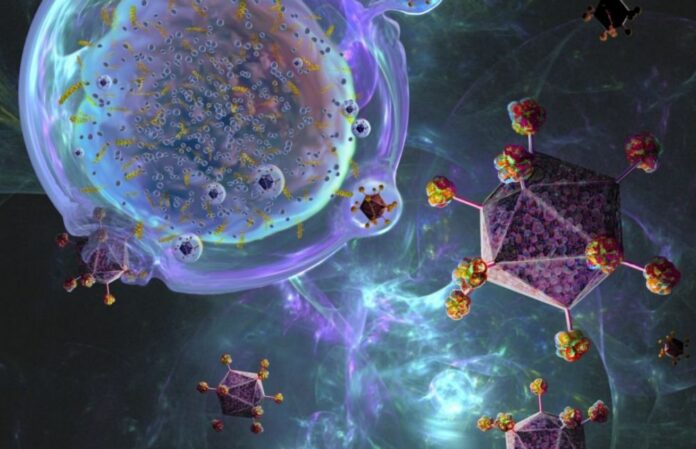Cutting-edge CRISPR technique leads the University of Rochester researchers to identify ST3GAL1 as the molecule that guides T cells towards solid tumors, offering hope for improved CAR T-cell therapy.
A team of researchers from the University of Rochester has made a breakthrough in the field of cancer immunotherapy by discovering a method to direct an army of immune cells towards cancer cells.
This discovery is expected to aid the development of improved CAR T-cell therapy for breast, lung, and brain cancer patients.
While CAR T-cell therapy has been effective in prolonging the lives of many cancer patients, its random migration to noncancerous tissues such as the lungs has resulted in toxic side effects.
The team at the University of Rochester/Wilmot Cancer Institute has identified the molecule responsible for directing T cells towards tumors, thereby paving the way for scientists to enhance this groundbreaking therapy.
According to Minsoo Kim, Ph.D., the corresponding author of a study published in Nature Immunology, the next phase of the research involves identifying a drug capable of manipulating the key T-cell protein, ST3GAL1.
If successful, this drug could be combined with the CAR T-cell therapy to ensure that T cells accurately target cancer cells.
Kim stated that his laboratory is partnering with other researchers at Wilmot to screen for potential drugs that can achieve this objective while minimizing the risk of harmful side effects.
“You can create very powerful treatments,” remarks Kim, “but if they can’t get to their targets or they go to the wrong place, it does not provide the outcome you intended.”
One of the most encouraging breakthroughs in cancer treatment is the use of a patient’s own immune system to eradicate cancer.
CAR T-cell therapy is a process that entails extracting a patient’s T cells, a type of white blood cell, and modifying them outside the body to detect cancer cells. These reprogrammed cells are then reintroduced into the patient’s bloodstream, where they function as a “living drug” by targeting specific proteins present on cancer cells. In 2016, Wilmot Cancer Institute was chosen as one of the limited number of national sites to commence clinical trials for this therapy. After receiving approval from the FDA, it subsequently became one of the earliest cancer centers in the United States to offer CAR T-cell treatment to qualifying patients.
As per the National Cancer Institute, CAR T-cell therapy is solely authorized to manage blood cancers, such as certain types of lymphoma, leukemia, and multiple myeloma. Altered T cells can effortlessly navigate to cancerous areas in the bloodstream, making it more convenient to treat blood cancers. However, solid tumors, such as breast, lung, brain, and melanoma, present a distinct challenge. The T cells must exert greater effort to penetrate tissues and organs and detect solid tumors.
According to Kim, clinical trials evaluating CAR T-cell therapy for solid tumors have not produced favorable outcomes. Research conducted at Wilmot Cancer Institute indicates that something happens during the T-cell re-engineering process that diminishes their ability to locate cancer cells.
Patrick Reagan, M.D., Richard Waugh, Ph.D., and Kim received a $2.8 million grant from the National Institutes of Health in 2019 to explore the adverse effects of CAR T-cell therapy, focusing on the situation that arises when T cells accumulate in noncancerous tissues. This research was conducted at Wilmot Cancer Institute.
According to Kim, the identification of the vital migration-control gene that produces ST3GAL1 was accomplished through “unbiased genomic screening.” This technique is a more effective way to investigate the issue. Researchers employed a state-of-the-art CRISPR approach to modify thousands of genes that are expressed in T cells. They then scrutinized the migration-control capabilities of each gene, one-by-one, over nearly four years, utilizing mouse models.
Source: 10.1038/s41590-023-01498-x
Image Credit: Getty
